Meet the PEP 2020 Students!
The 2020 PEP Research Symposium was held via Zoom Webinar on
Friday, August 7.
Click here to watch the morning session on YouTube
Click here to watch the afternoon session on YouTube
Click here to read the NOAA NEFSC featured story
MORNING SESSION
9:00 Introductions – Onjalé Scott Price & George Liles
9:05 Identifying Sulfate Reducing Bacteria By Assembling Genomes From Eastern U.S. Salt Marsh Habitat
Presented by: Eli Ahiamadjie, Delaware State University; Research Mentor: Elena Peredo (MBL)
9:20 Assembling Metagenomes of Sulfide Oxidizing Bacterial Communities in Eastern Coastal Spartina Salt Marshes Presented by: Jaimy Jabon, University of Massachusetts Boston; Research Mentor: Elena Peredo (MBL)
9:35 Visualizing Invisible Boundaries in the Ocean: Distribution of Water Masses in the Northeast U.S. Shelf
Presented by: Ayanna Butler, Howard University, Research Mentor: Stace Beaulieu (WHOI)
9:50 Exploring the Influence of Helical Swimming in Turbulence on Larval Dispersal
Presented by: Jailyn Dorsett, Delaware State University; Research Mentor: Lauren Mullineaux (WHOI)
10:05 Determining presence of haddock within the Stellwagen Bank National Marine Sanctuary using passive acoustic monitoring Presented by: Kristen McCauley, Savannah State University; Research Mentor: Gen Davis (NEFSC)
10:20 Examination of Scope 3 Greenhouse Gases for Woods Hole Research Institutions
Presented by: Andrea Regan Scott; University of North Carolina at Pembroke Research Mentor: Erin Bryant (SEA)
10:35 Detecting and Mapping Abrupt Landscape Change in Permafrost Regions of Siberia
Presented by: Tiffany Windholz, Oklahoma State University; Research Mentor: Sue Natali (WCRC)
10:50 What Strategies Can Help Plastic Pollution Reduction Campaigns Engage and Interact With Their Audience Online? Presented by: Quinn Bustos, New Mexico Institute of Mining & Technology; Research Mentor: Erin Bryant (SEA)
11:05 Closing Remarks
AFTERNOON SESSION
13:00 Introductions – Onjalé Scott Price & George Liles
13:05 Dive Behavior of Loggerhead Sea Turtles Along the Greater Atlantic and Southeast Regions of the United States
Presented by: Christopher R. Sandoval; University of Texas at El Paso; Research Mentor: Joshua Hatch (NEFSC)
13:20 Tracking the Nearshore Sandbar Morphology using Photogrammetry at Head of the Meadow Beach, Massachusetts
Presented by: Jose Cabral, University of Texas at El Paso; Research Mentor: Chris Sherwood (USGS)
13:35 BREAK
13:50 Nitrogen Cycling in the Yucatan Karst Subterranean Estuary
Presented by: Stephen Galindo, Humboldt State University; Research Mentor: Meagan Gonneea (USGS)
14:05 Calcium carbonate fluxes in the Atlantic Ocean through sediment trap particulate inorganic and organic carbon data
Presented by: Aundre Jackson, North Carolina Central University; Research Mentor: Adam Subhas (WHOI)
14:20 Investigating Carbon Fluxes with Sediment Traps in the Pacific Ocean
Presented by: Katherine Muniz, Wellesley College; Research Mentor: Adam Subhas (WHOI)
14:35 Study of the Distributions on Benthic Invertebrates
Presented by: Hayden Stuart, New Mexico State University; Research Mentor: Dvora Hart (NEFSC)
14:50 Distribution of Hermit Crabs and Echinoderms Along the Mid Atlantic Bight and Georges Bank
Presented by: Ayinde Best, Wheaton College (MA); Research Mentor: Dvora Hart (NEFSC)
15:05 Closing Remarks

Eli Ahiamadjie
Delaware State University
Major: Biological Sciences, Classification: Junior
Research Mentor: Elena Peredo (MBL)
Title: Identifying Sulfate Reducing Bacteria By Assembling Genomes From Eastern U.S. Salt Marsh Habitat
Abstract: Spartina alterniflora is a species of cord-grass commonly found in salt marshes in the Atlantic Coast of the US. This type of cord-grass is able to survive and grow in salt-marshes in part because of the interaction between the plant’s roots and sulfate reducing and sulfur oxidizing bacteria. These bacteria perpetuate a cycle of sulfur movement through the soil and allow Spartina alterniflora to grow and provide a habitat for other organisms, overall improving the health and biodiversity of the salt marsh. Our team used metagenomic sequences collected from bacteria in salt marshes from Alabama and Massachusetts to see what specific bacteria were present in the soil and what their functions are. After downloading our genome sequences in the form of fastq files from various experiments in these salt marshes, we used the sequencing programs Trimmomatic and Prinseq to trim and arrange our reads. After that, we assembled those reads into contigs (DNA segments) using the Metaquast and Kraken sequencing programs and were now able to tell what bacteria were present in the samples.

Jaimy Jabon
University of Massachusetts Boston
Major: Biology, Classification: Senior
Research Mentor: Elena Peredo (MBL)
Title: Assembling Metagenomes of Sulfide Oxidizing Bacterial Communities in Eastern Coastal Spartina Salt Marshes
Abstract: The relationships between the microbial communities living in the soil underneath the Spartina marshes have metabolic functions that are yet to be fully understood. In this project we used command line programs to assemble metagenomes to study the microbial diversity in this system with special focus in sulfide oxidizing bacteria. We gathered metagenomic Illumina reads from the NCBI database using fastq-dump . Our sampled sites are located along the Eastern Coast of the US such as Alabama and Massachusetts. We used a total of 25 samples using only 11 million reads from each sample which translates to 4Gb of data for each sample. After filtering and processing using the trimmomatic and prinseq programs, each sample retains about 9 million reads (3.8Gb). We kept a record of all of our processed and unprocessed data using the fastqc program to visualize the throughput sequence data. We then concatenated the data and assembled the reads into contigs using Megahit. We used MetaQuast to evaluate and compare the quality of the metagenomic assemblies. Finally, we used Kraken to annotate taxonomy and identify the sulfide oxidizing bacteria present in the samples collected.

Ayanna Butler
Howard University
Major: Civil Engineering, Classification: Senior
Research Mentor: Stace Beaulieu (WHOI)
Title: Visualizing Invisible Boundaries in the Ocean: Distribution of Water Masses in the Northeast U.S. Shelf
Abstract: The water above the Northeast U.S Shelf is home to many different species, and environmental conditions can change the abundance and location of these species. Within our oceans are water masses, pockets of water with their own unique qualities i.e temperature, salinity, etc. The objective of this project was to develop a workflow to identify locations of water masses based on the RV Endeavor research cruise data. The purpose of this research was to interpret shelf data in order to make analyses efficient for scientists of all professions. The software RStudio was used to create temperature and salinity plots based on the path of the cruise to identify the changes in these parameters. A plot was also created to map the different water masses based on the salinity readings. Users can use the scripts to identify water masses for data from a variety of different time periods, observe the changes and locations of the water masses, and help to understand the changes in biodiversity along the shelf.
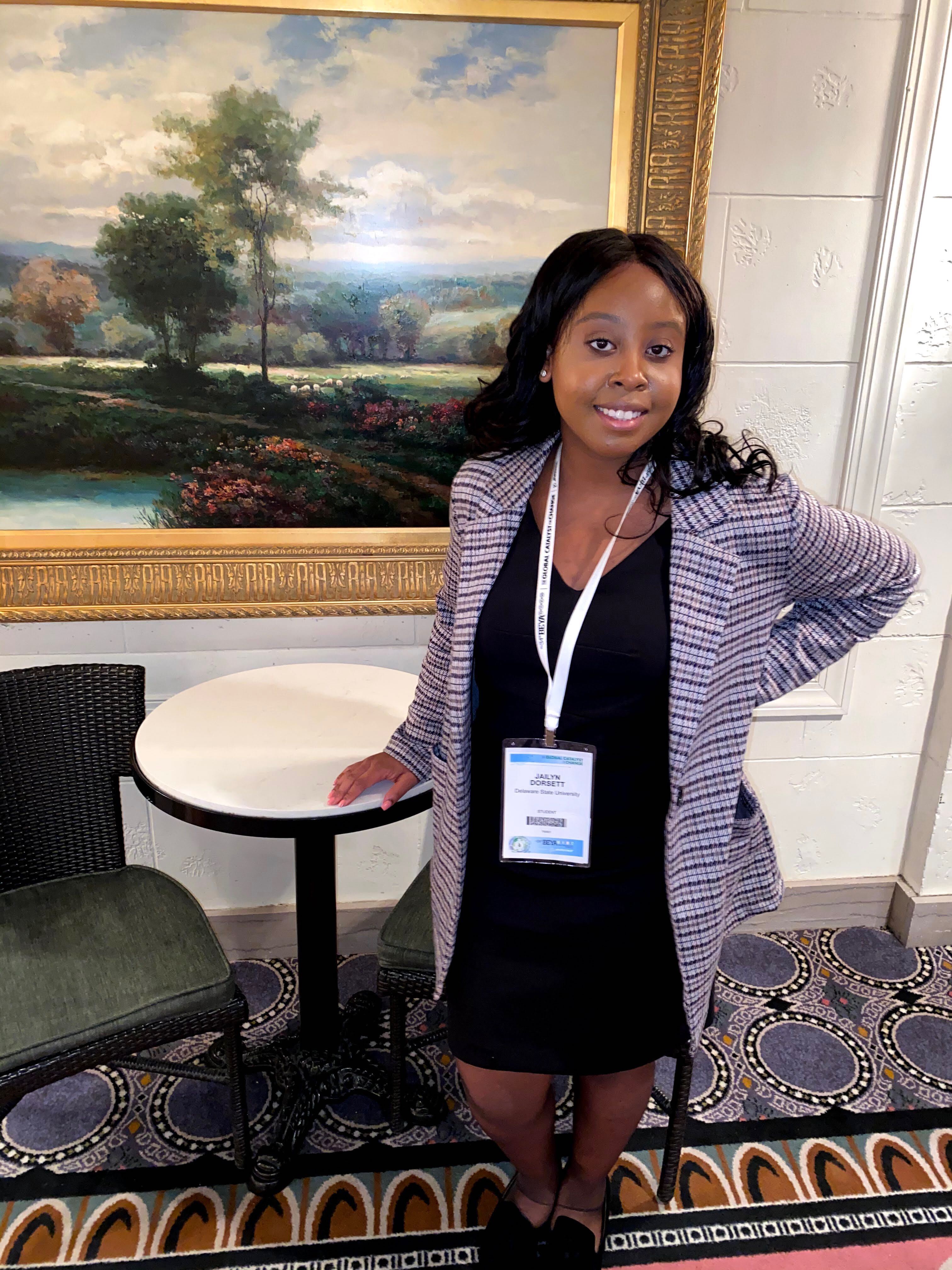
Jailyn Dorsett
Delaware State University
Major: Engineering Physics, Classification: Junior
Research Mentor: Lauren Mullineaux (WHOI)
Title: Exploring the Influence of Helical Swimming in Turbulence on Larval Dispersal
Abstract: Larval dispersal and mortality are an important consideration in studies of the ecology, management and conservation of oceanic species. The larvae of benthic invertebrates are transported based on the conditions in the water column as well as their swimming behaviors. Larval swimming has been studied in still water in previous research many times even though their natural environment consists of turbulent water flow. Many species of larvae including the Eastern Oyster (Crassostrea virginica) swim in a helical motion. Helical motion describes a combination of straight-line motion and a circular side-to-side motion in a corkscrew-like trajectory. However, the full effects of helical swimming in small-scale turbulence are not well known. We simulated trajectories of multiple larvae to quantify the effects of helical swimming in turbulence on dispersal. This simulation varied the side-to-side (us) and vertical (ws) components of helical swimming independently relative to an idealized small-scale turbulent flow. We unexpectedly found at increasing helical swimming speeds faster than the flow increased horizontal spread but decreased vertical spread of larval trajectories. This work could be used to aid researchers in parameterizing larval dispersal models in the future.
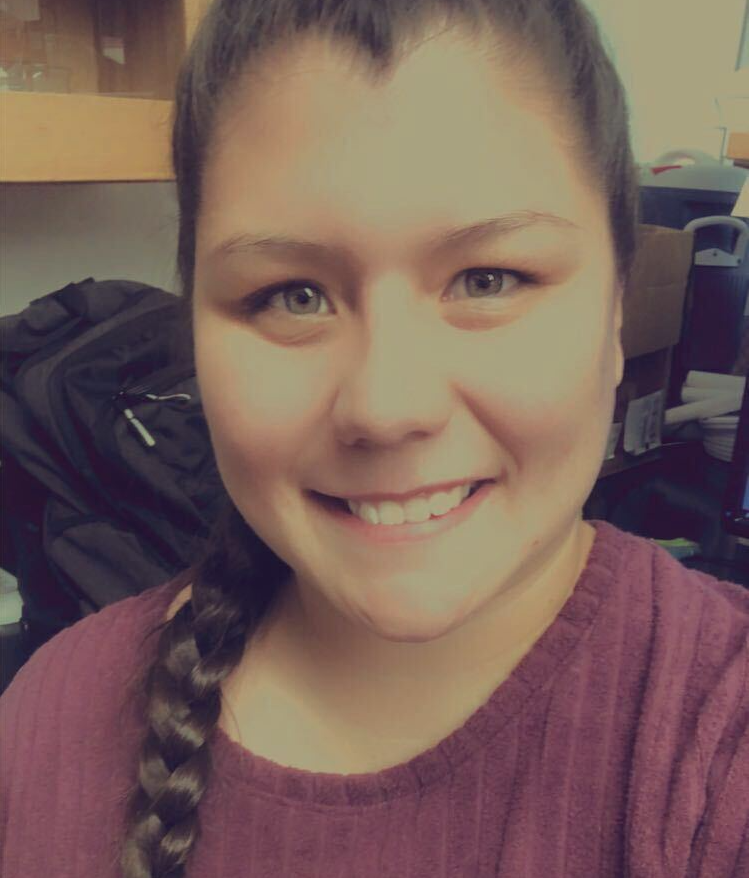
Kristen McCauley
Savannah State University
Major: Marine Biology/Science, Classification: Senior
Research Mentor: Gen Davis (NOAA-NEFSC)
Title: Determining presence of haddock within the Stellwagen Bank National Marine Sanctuary using passive acoustic monitoring
Abstract: Haddock (Melanogrammus aeglefinus) are an important commercial fish species in the North Atlantic and are subjected to high fishing pressures. To better manage the fishery, passive acoustic monitoring can be used to determine the location and presence of haddock. Haddock are vocal spawners, with males using their swim bladders to produce a series of pulsed vocalizations during breeding periods. In this study we used passive acoustics to determine when haddock are present in the Stellwagen Bank National Marine Sanctuary (SBNMS). The goal was identifying important times and areas for haddock within the sanctuary. A slocum glider was deployed in the SBNMS from January 2020 to April 2020 and recorded underwater acoustics continuously. The acoustic data were viewed for the hourly presence of haddock vocalizations using the acoustic analysis software RavenPro 2.0. Future plans with this research could include seasonal closures to protect important spawning grounds and habitats to conserve the species.

A. Regan Scott
University of North Carolina at Pembroke
Major: Biology, Classification: Senior
Research Mentor: Erin Bryant (SEA)
Title: Examination of Scope 3 Greenhouse Gases for Woods Hole Research Institutions
Abstract: This study examines the commuting habits of employees of various scientific institutions in the Woods Hole community. The three institutions involved in the study, Sea Education Association (SEA) , Marine Biological Laboratory, and Northeast Fisheries Science Center, know the importance of mitigating global climate change and are searching for innovative ways to curb their own impact towards global climate change. The transportation sector is a significant contributor to global climate change through the production of vast amounts of greenhouse gases. This study aims to provide a solution to limit scope 3 greenhouse gases produced by these institutions by limiting the amount of days each employee is required to commute. The data was collected from surveys sent out to employees at these institutions with questions concerning average fuel mileage, length of commute, and usual form of transportation. 173 survey responses were recorded and used to determine current scope 3 greenhouse gas contribution of these various institutions. Scope 3 greenhouse gas contribution was also calculated in a scenario with each employee teleworking from home at least one day per week. This data was used to create a proposal for SEA to limit greenhouse gases by allowing employees to telework once per week.

Tiffany Windholz
Oklahoma State University
Major: Environmental Science – Natural Resources, Classification: Junior
Research Mentor: Sue Natali (WCRC)
Title: Detecting and Mapping Abrupt Landscape Change in Permafrost Regions of Siberia
Abstract: The Arctic is warming two times faster than any other place in the world. With this comes the risk of landscape-altering permafrost thaw. Western Siberia is undergoing rapid change, including the occurrence of retrogressive thaw slumps and gas emission craters. These features can rapidly disrupt the landscape, posing a threat to human infrastructure and people who live in the Arctic, and they are a source of greenhouse gasses. However, the full impacts of these features are uncertain, partly due to a lack of information about their spatial distribution. To understand these features better we used remotely-sensed products of surface reflectance (Landsat) and elevation (ArcticDEM) and Google Earth Engine to detect and map landscape change across a 327,000 km2 region in the Yamal and Gydan Peninsulas. We found that 5.09% of the total landscape displayed change. We found that of the disturbed areas that were validated with high resolution imagery, 53% were retrogressive thaw slumps. We also detected several lakes that had characteristics of gas emission craters; however, ongoing work is needed to confirm these findings. This satellite-based approach provides new insight into the frequency of abrupt events occurring across the landscape that can have global impacts.

Quinn Bustos
New Mexico Institute of Mining and Technology (New Mexico Tech)
Major: Technical Communication, Classification: Sophomore
Research Mentor: Erin Bryant (SEA)
Title: What Strategies Can Help Plastic Pollution Reduction Campaigns Engage and Interact With Their Audience Online?
Abstract: Ocean plastic pollution has become more prevalent and is negatively impacting marine organisms. As a result of this, many environmental campaigns now seek to reduce plastic pollution. The internet and social media have significantly helped these campaigns promote their cause. Online audience interaction and engagement is highly beneficial when using various platforms for this purpose. My study intended to determine if audience interaction/engagement increased when content appealed to a particular stage of the Five Doors Theory of behavior change. Additionally this study aimed to see how many interactive features the websites of plastic pollution reduction campaigns used, and if any novel features were being used. To do so, I categorized posts from various plastic pollution reduction campaigns’ social media accounts using stages from the Five Doors Theory. I also explored the campaigns’ websites to find any interactive features present. My study found that posts categorized as Buzz generally showed the most audience interaction/engagement in the form of feedback such as likes, comments, or retweets. However, this may simply be because it was the most common category in the study. A majority of interactive features were not found on the websites.
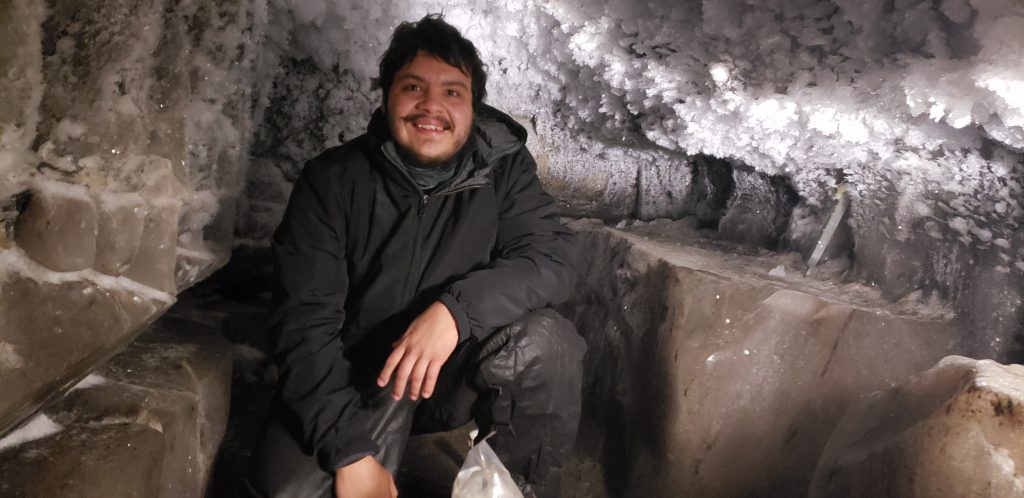
Christopher Sandoval
University of Texas at El Paso
Major: Environmental Science – Biology, Classification: Senior
Research Mentor: Joshua Hatch (NOAA-NEFSC)
Presentation Title: Dive Behavior of Loggerhead Sea Turtles Along the Greater Atlantic and Southeast Regions of the United States
Abstract: Understanding the regional dive behavior of loggerhead sea turtles (Caretta caretta) is important to their conservation and protection. Satellite telemetry, which involves attaching a tag to the carapace of an individual turtle, allows scientists the ability to survey and study dive behavior remotely. Since 2009, over 200 satellite tags have been deployed on loggerhead turtles by the NEFSC and collaborators in the Greater Atlantic and Southeast regions of the United States. The data collected from those tags contained tens, hundreds, or even thousands of dive profiles per individual consisting of a very large and at times “messy” dataset (n = 190,818). To conserve battery life and improve tag duration, the satellite tags were programmed to abstract dives into 5 breakpoints that efficiently captured the overall shape of the dive. A K-means clustering algorithm was then used to objectively categorize abstracted dives into meaningful groupings. To facilitate the use of a K-means clustering algorithm, dive profiles were cleaned and deconstructed into a set of variables that summarized the abstracted dives’ attributes. Those variables included dive duration in seconds, maximum dive depth in meters, vertical and horizontal displacement in kilometers, average dive velocity in kilometers per hour, the standard deviation of the three middle dive depths, dive symmetry, time of day, month, and latitude in decimal degrees. Using the elbow method, the optimal number of clusters or groupings was investigated. Dive profiles were further explored by plotting them by assigned clusters

Jose Cabral
University of Texas at El Paso
Major: Geophysics, Classification: Junior
Research Mentor: Chris Sherwood (USGS)
Title: Tracking the Nearshore Sandbar Morphology using Photogrammetry at Head of the Meadow Beach, Massachusetts
Abstract: The Cape Cod National Seashore has seen an increase in white shark sightings and attacks. The USGS has teamed with the Massachusetts Department of Marine Fisheries and the Provincetown Center for Coastal Studies to observe the activity of tagged sharks using beacons and are attempting to relate shark behavior to nearshore bar morphology or oceanographic conditions. To understand the relationship between sharks and sandbars, if any, we need to examine and track bar morphology. Two cameras were mounted at Head of the Meadow Beach and the imagery collected by these cameras were used to observe sandbar morphology, water level change, and beach erosion and accretion. The intrinsic calibration (lens model) was done using checkerboard images and a Matlab toolbox. The extrinsic calibration (location and view angle) was done with GPS and geolocated targets on the beach. With the camera calibration coefficients, an aerial map view of the beach was created. We animated maps and were able to observe the sandbars evolve. We used wave data from buoy 44018 and predicted tides, as waves and tides affect the bar shape. We noticed the biggest change in the sandbars occur in the winter when the tides and waves are more energetic.

Hector Dominguez
University of Texas at El Paso
Major: Environmental Science
Classification: Sophomore
Research Mentor: Meagan Gonneea (USGS)
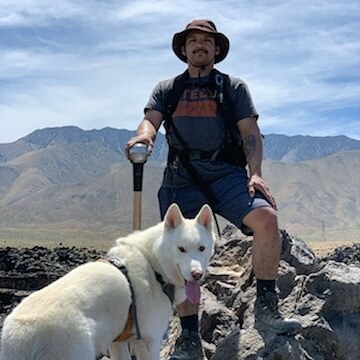
Stephen Galindo
Humboldt State University
Major: Geology, Classification: Senior
Research Mentor: Meagan Gonneea (USGS)
Title: Nitrogen Cycling in the Yucatan Karst Subterranean Estuary
Abstract: Highly permeable karst subterranean estuaries (KSE) contain aquifers with high dissolved chemical load, representing a major source of terrestrially-derived nutrient and trace element transport to the coast via groundwater discharge. Our study focuses on nitrogen cycling in the Yucatan KSE, where high amounts of nitrogen in the groundwater are ultimately discharged into the ocean through coastal springs and diffuse discharge. During transport, terrestrial groundwater mixes with recirculated marine groundwater and as a result is subjected to changes in salinity and dissolved oxygen content. This mixing results in chemical gradients that influence nitrogen speciation and concentration. Water samples were collected from cenotes(sinkholes in the limestone), springs, and offshore transects in 2012-2014. Based on previous estimates of groundwater discharge and dissolved inorganic nitrogen (DIN) concentrations, we calculated DIN flux to the Yucatan coast. In addition, we evaluated nitrogen removal during groundwater mixing and discharge at the coast. The biogeochemical processes that alter nitrogen concentrations in oxic/anoxic waters within the KSEs are critical to estimating N-fluxes associated with groundwater discharge.

Aundre Jackson
North Carolina Central University
Major: Environmental Science, Classification: Junior
Research Mentor: Adam Subhas (WHOI)
Title: Calcium carbonate fluxes in the Atlantic Ocean through sediment trap particulate inorganic and organic carbon data
Abstract: Over the summer during my internship with the Partnership Education Program (PEP), I studied particulate flux data in the Atlantic Ocean, the second largest ocean basin. Calcium carbonate is an important portion of the carbon cycle because its dissolution buffers acidification due to anthropogenic CO2 emissions. Ocean acidification depletes ocean carbonate ion; a key shell-building block in sea water, ultimately harming a variety of marine species (such as, but not limited to coccolithophores, foraminifera, pteropods, and reef-building corals). My research is based around why there is variability of calcium carbonate flux in the Atlantic Ocean basin. The key components of my research are focused on the particulate organic carbon (POC) and particulate inorganic (PIC) carbon flux in a global compilation of sediment trap data (Mouw 2016). The depth profiles of PIC and POC fluxes are high at the surface, but decrease rapidly with depth, suggesting that both organic carbon and PIC are remineralized in the shallow ocean.. This analysis of PIC and POC is important due to the fact that it shows new linkages between the flux of POC and PIC in the Atlantic, suggesting a strong relationship between calcification and organic carbon production and remineralization.
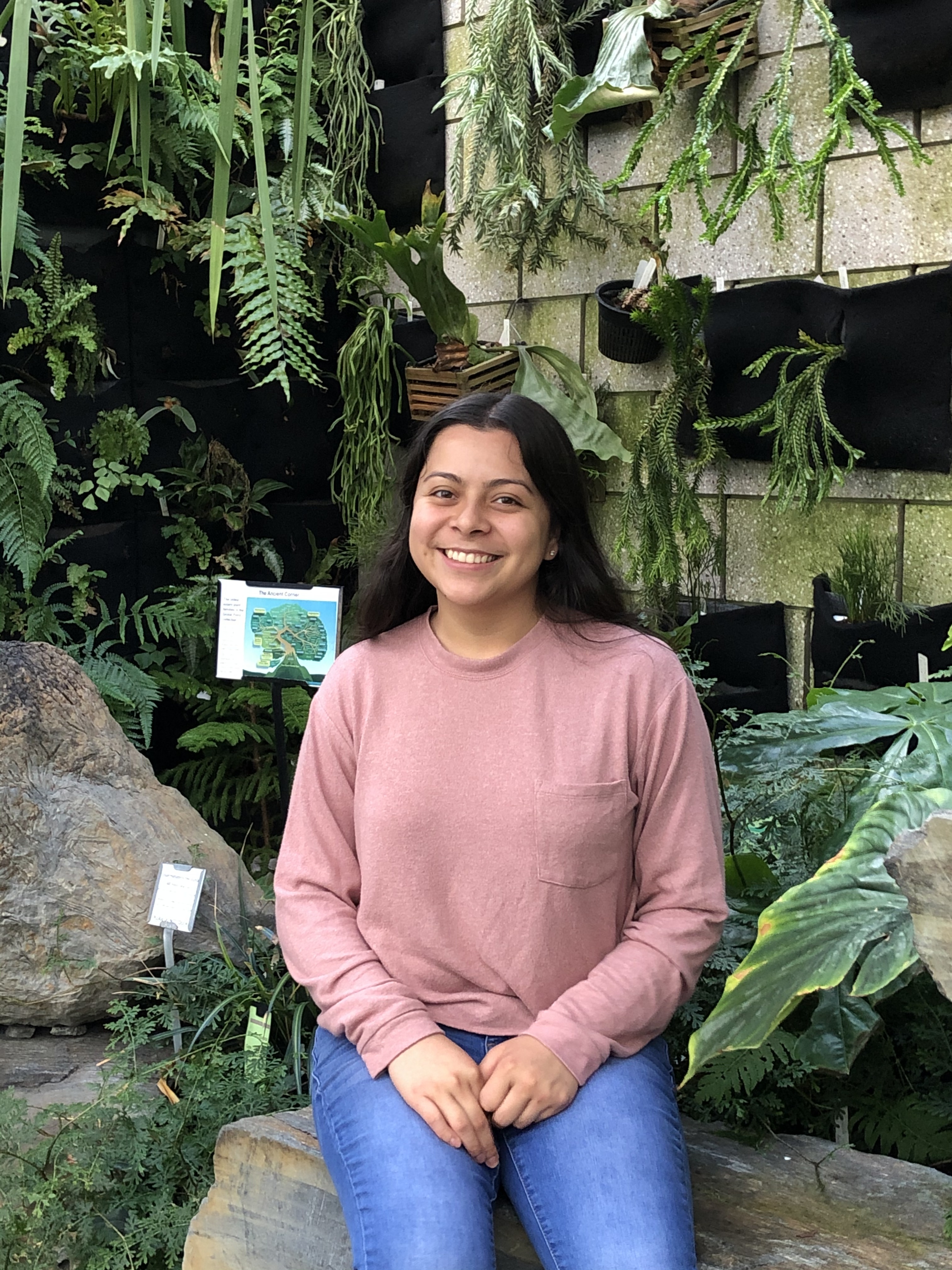
Katherine Muniz
Wellesley College
Major: Environmental Science, Classification: Sophomore
Research Mentor: Adam Subhas (WHOI)
Title: Investigating Carbon Fluxes with Sediment Traps in the Pacific Ocean
Abstract: As ocean acidification, caused by carbon emissions, continues to decrease the pH of the ocean, biologically produced calcium carbonate (CaCO3) will begin to dissolve at faster rates. Using a global database (Mouw 2016), we examined the relationships between CaCO3 formation and dissolution with sinking fluxes. Sinking fluxes were monitored in the Pacific Ocean with sediment traps across a range of space (North, South, and Equator) and timescales. We investigated the variability of particulate organic carbon (POC) and particulate inorganic carbon (PIC) fluxes to understand the ratios between them and the overall dissolution trend as a function of depth. Our results show that CaCO3 flux is much more variable than POC. At the surface, the variability scales up to four orders of magnitude indicating that the production and export of CaCO3 is not constant in time. Furthermore, as we go deeper into the water column, the ratio of PIC to POC increases, suggesting that POC is remineralizing at a faster rate. Therefore, the relationship between PIC to POC is able to show that dissolution is dependent on POC degradation rather than saturation state. Through our research, we hope to understand the implications and effects these conditions will have on the disintegration rate and ocean life. Mouw, CB et al. (2016): Global ocean particulate organic carbon flux merged with satellite parameters.
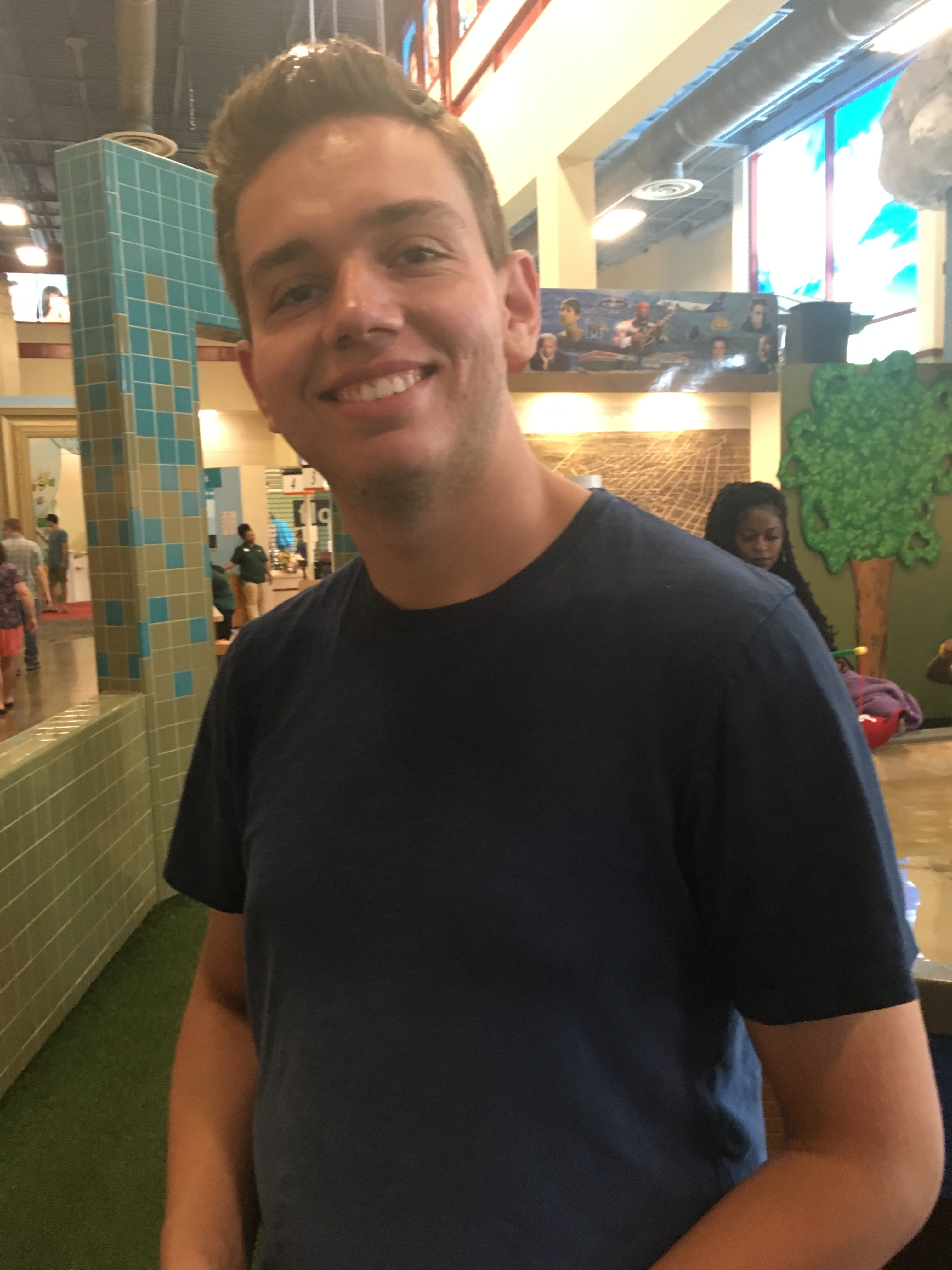
Hayden Stuart
New Mexico State University
Major: Fisheries Biology, Classification: Junior
Research Mentor: Dvora Hart (NOAA-NEFSC)
Title: Study of the Distributions on Benthic Invertebrates
Abstract: The Habcam towed camera vehicle is mainly used to collect data on sea scallops, which support a very valuable commercial fishery. However, many non-commercial benthic invertebrates are also seen in the Habcam sea floor images, and much less is known about spatial distributions of these species. We examined the distributions of anemones, bryozoans, comb jellies, sea mice, and skate egg cases from Habcam images taken in the Mid-Atlantic Bight and Georges Bank. These objects were marked and counted using a web annotator. All of the these with the exception of bryozoans were most common at depths of 50 to 60 meters. Bryozoans, on the other hand, mainly occur in deeper waters. Latitude varied more between the five species: anemones were most common north at 40°, comb jellies mostly live at 39°, bryozoans and sea mice were most common at 38°, and egg cases were found in large numbers at all latitudes with the highest recorded count at 38°. These wide ranges in depth and latitude could be due to the range of temperatures each species can survive and close proximity to food sources.

Ayinde Best
Wheaton College (MA)
Major: Environmental Science, Classification: Sophomore
Research Mentor: Dvora Hart (NOAA-NEFSC)
Title: Distribution of Hermit Crabs and Echinoderms Along the Mid Atlantic Bight and Georges Bank
Abstract: This study observed the distribution of hermit crabs and six species of echinoderms -brittle stars, and the sea stars Astropecten americanus, Leptasterias tenera, Henricia sanguinolenta,Asterias vulgaris, and Asterias forbesi, in the Mid Atlantic Bight and Georges Bank using photographic (Habcam) data from NOAA scallop survey cruises. Some sea stars are natural predators of scallops, so data on both species abundance and distribution would be useful for having a better understanding of the relationship between the species. Hermit crabs are scavengers on the seafloor. To collect data, we annotated Habcam images of the seafloor using annotation software from Amazon and Kitware (VIAME). The study found that Astropecten are most commonly found at depths of 70-90 meters and are more abundant in the Mid Atlantic while the other species of sea stars are more abundant in Georges Bank. Hermit crabs are found in both the Mid Atlantic and Georges Bank, but at shallower depths, from 20-60 meters. Reasons for these distribution patterns include water temperatures and predator prey relationships. Astropecten are less common in Georges Bank because the water is too cold, and hermit crabs are less common in deeper water because they can be eaten by Astropecten.
